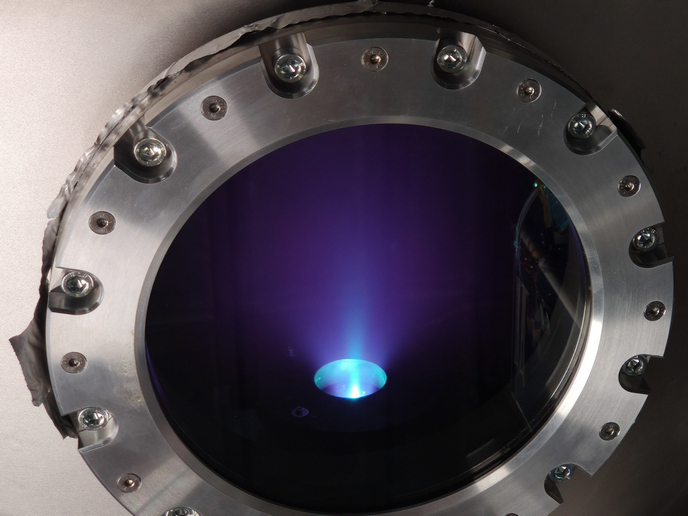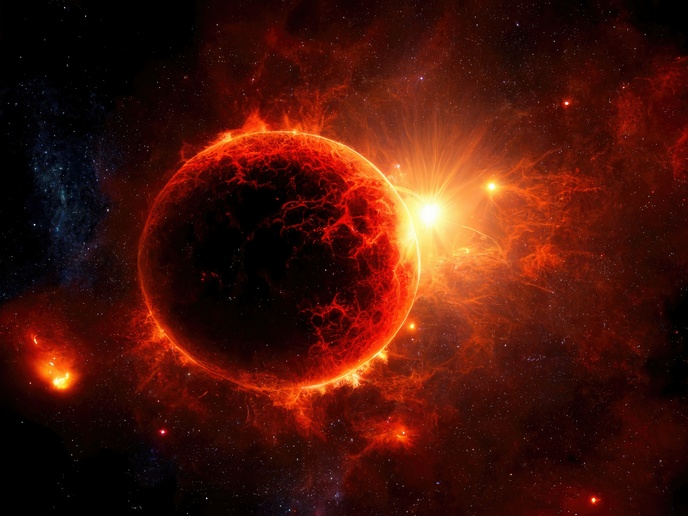Deciphering the magnetic pulse of Mars and the Moon
Unravelling how planets formed and evolved over time is a complex research endeavour. A key to this puzzle lies in understanding planetary magnetic fields, which are generated deep within a planet’s core through a process known as dynamo. The study of these dynamo fields reveals valuable insight into the structure, composition and thermal state of a planet’s deep interior, providing a glimpse into its geological history. Mars and the Moon, the focus of the PETRA project, which received funding under the Marie Skłodowska-Curie programme, currently lack a dynamo field. However, their crusts, or upper rocky layers, retain magnetisation, suggesting they once hosted a dynamo field. “The crustal magnetic field – a secondary field arising from magnetised rocks – along with palaeomagnetic measurements from laboratory experiments on rock samples, form the core of PETRA’s research,” notes project coordinator Foteini Vervelidou. “By studying these, PETRA sought to constrain the properties of the Martian and lunar dynamos.”
Martian dynamo field under study
The researcher conducted palaeomagnetic tests on nine paired stones from NWA 7034, a Martian meteorite with 4.4 billion-year-old zircon crystals. “Regrettably, our data showed these samples were exposed to strong hand magnets, a common meteorite identification method, erasing their magnetic history,” highlights Vervelidou. “We conducted an extensive study to illustrate how hand magnets destroy crucial, ancient magnetic records, using numerical modelling and controlled remagnetisation experiments.” The team succeeded in acquiring and measuring samples from nine different paired stones, developing a protocol to determine whether a sample has been remagnetised. This should help future studies avoid misinterpreting artificial magnetic records. “Despite the erasure of the primary magnetic record of the Martian meteorite, it is still important to examine the zircons’ ability to preserve a magnetic record since their crystallisation,” states Vervelidou. “We have initiated a study using a magnetic microscope, notable for its exceptional sensitivity. This research will aid in the analysis of samples collected by the Mars 2020 Perseverance Rover, utilising the microscope capability to map magnetic fields with a spatial resolution of 300 μm.”
Lunar dynamo field under study
The researcher also conducted paleomagnetic and rock magnetic studies on lunar samples from the Apollo 16 and 17 missions. These samples – spanning two billion years – revealed compelling evidence of lunar magnetism. “The 3.7 Gyr old mare basalts from Apollo 17 were found to be magnetised by a uniform magnetic field of about 40 μT. Furthermore, one subsample carried two distinct magnetic signatures, indicating the lunar origin for these rocks’ magnetic records. Overall, these results support the hypothesis that the Moon once had a strong dynamo field,” outlines Vervelidou. The study also uncovered that the lunar magnetic field dropped significantly over time, to around 5 μT by 3.4 Gyr ago, and possibly to zero by 1.7 Gyr ago. In the light of previous studies, which have estimated the lunar magnetic field to have lasted until around 1.5 Gyr ago, these results offer evidence in favour of an intermittent lunar dynamo operation or a dynamo whose intensity was fluctuating in time. “Our work with Apollo 17 mare basalts sought to identify potential rapid variations in the lunar magnetic field intensity but our results do not provide such evidence,” explains Vervelidou. “When working with Apollo 16 regolith breccias, we followed a different laboratory protocol, which involved heating the rocks in a controlled atmosphere. Our study results provided the first absolute measurement of the lunar dynamo field intensity 3.4 Gyr ago.” “PETRA’s versatile methodologies can be applied to any terrestrial body, offering valuable insight into planetary formation and evolution. By optimising the synergy between spacecraft measurements and laboratory studies, a goal PETRA contributed to, we can fully leverage the opportunities presented by ongoing and upcoming ESA-led missions,” concludes Vervelidou. Ultimately, worth noting is a comic book titled ‘The METEORITE who was TOO MAGNETIC’ unravelling the geological history of planets that was developed in the context of PETRA.
Keywords
PETRA, Mars, magnetic field, dynamo field, Moon, paleomagnetic, Apollo







